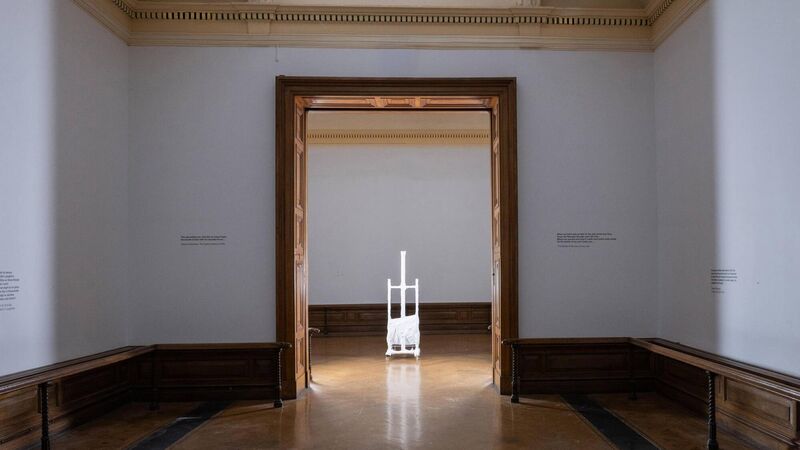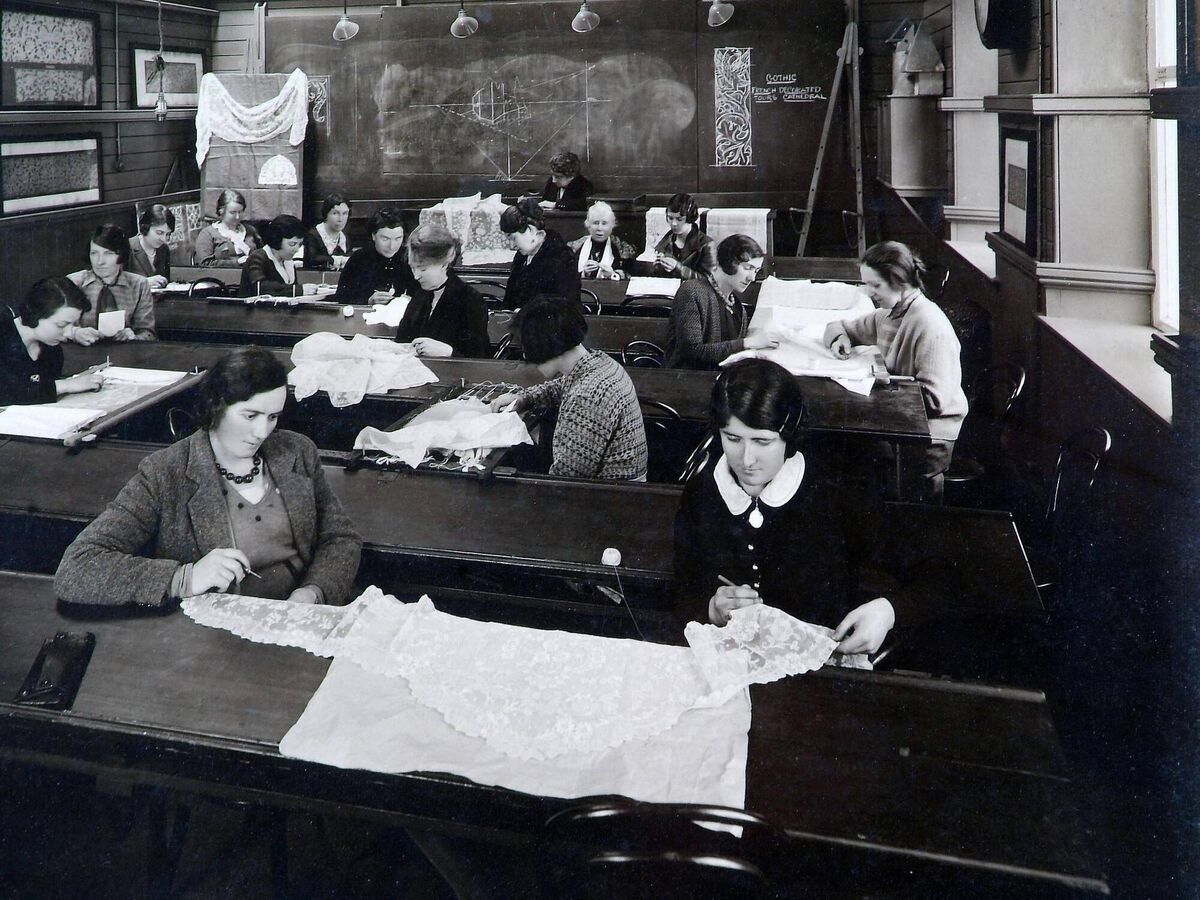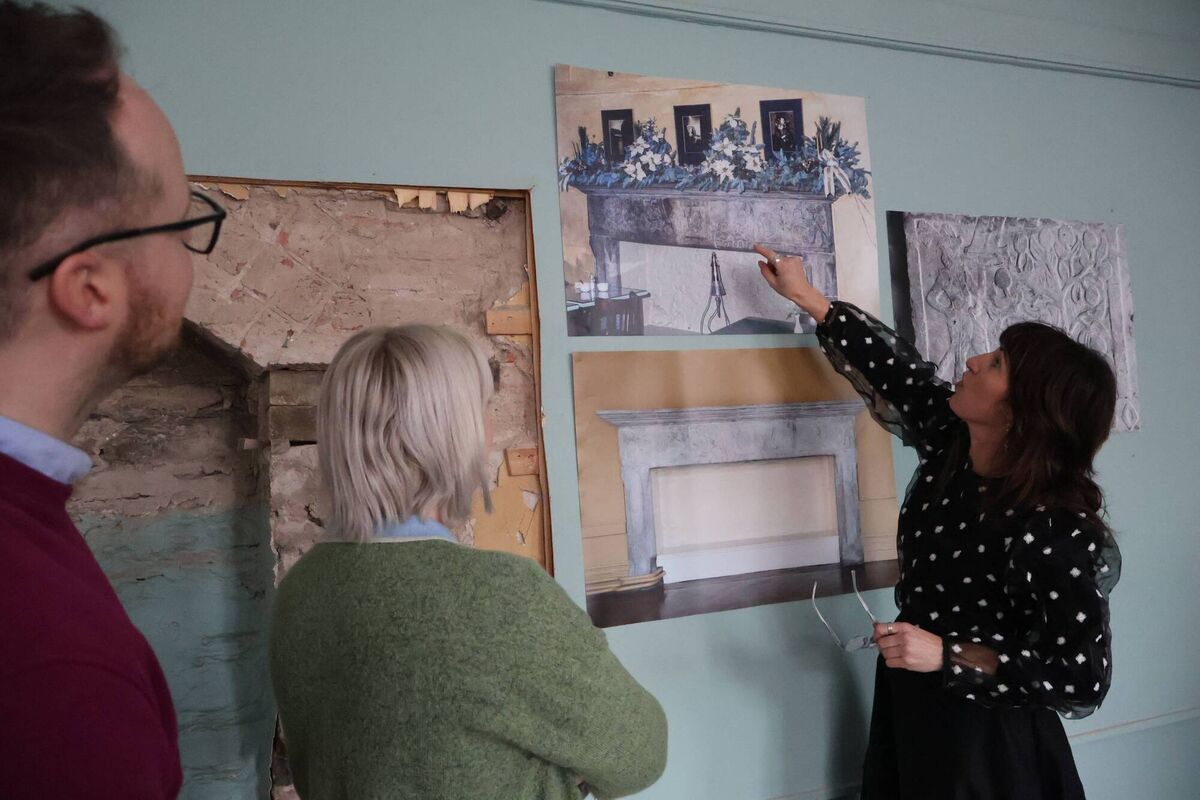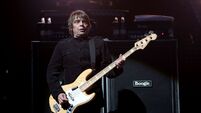I took one of the tours of the empty Crawford in Cork... here's what I saw

The Crawford Art Gallery in Cork is mostly empty in preparation for a major overhaul to begin on the building early next year.
As a regular visitor to the Crawford Art Gallery over the past 50 years, I have always delighted in its exhibitions. Now that the Crawford has closed for a €93-million refurbishment – the largest single cultural investment ever made in Cork – most of its 3,500 artworks have been moved to off-site storage.
Last Thursday, I was fortunate to join Crawford Uncovered, a tour of the empty building led by director Mary McCarthy and architect Gareth O’Callaghan, a board member. We walked through familiar areas – the galleries and café – as well as spaces usually hidden from public view – back stairs, storage rooms, offices and the conservation lab. Here's what to watch out for if you're lucky enough to get on one of the other tours:
Until its closure in September 2024, the Crawford welcomed 280,000 visitors annually, many of whom lingered in the café, located in the oldest part of the building: the former Custom House of 1724. In those days, ships docked where Emmet Place now stands. The Custom House gable even appears in one of the earliest works in the Crawford collection, John Butts’ late 18th century View of Cork.
The most striking feature in the former café today is its dismantled stone fireplace, its pieces laid out and numbered on the floor. Believed to date from the late 1700s, the fireplace is designated as an artwork, and will be “the last to leave the building,” says McCarthy. In the new design, the café space will become a large reception area connected to a new main entrance on Emmet Place.

In 1830, the Custom House was given to the Royal Cork Institution, later evolving into the Cork School of Design. In 1884, philanthropist William Horatio Crawford funded a major extension of galleries and studios, and the building became the Crawford School of Art.
The lecture theatre, with its steeply raked seating, dates from this period and has hosted talks by international artists such as Joseph Beuys, Kiki Smith and Seán Scully. The talk I remember most vividly was by the Australian performance artist Stelarc, who showed off the cell-cultivated ear he had surgically attached to his left arm.
The theatre is to undergo the most radical overhaul of the building’s refurbishment; the seating will go, and the space will become what McCarthy calls “a meeting place and orientation point at the very centre of the new building.”
“This is the space that will bring the new and the old together,” adds O’Callaghan, outlining how the windows on the ceiling will expose the most dramatic aspect of the new building, a six-storey extension looming overhead. This will comprise two floors of storage, a learning centre, and three new gallery spaces, the topmost offering panoramic views of the city.
It was a surprise to find one of the Crawford’s best-loved paintings, The Goose Girl (1888) by Edith Somerville, perched on an easel in the conservation lab in one of the building’s former classrooms. Although the painting is in good condition, every artwork in the Crawford Collection has been assessed by conservators over the past 18 months, with many being restored before being put in storage.
These classrooms will now be reborn as a new restaurant with windows onto Half Moon Street, along with a new bookshop and bathrooms accessed via a wide corridor.

When Joseph Stafford Gibson died of Spanish Flu in 1919, he left the Crawford a significant collection of ceramics, miniatures, silverware and journals, along with £14,790. This legacy enabled the gallery to acquire major works by Seán Keating, John Lavery, Harry Clarke and Nano Reid, and it now funds the Gibson Travelling Fellowship, revived in 2025 and first awarded to Basil Al-Rawi.
Under the refurbishment plan, the Gibson Galleries on the second floor will be restored but will remain largely unchanged as exhibition spaces. The Long Room gallery currently displays a selection of the Crawford’s catalogues and publications, forming what McCarthy calls “a visual archive of our history.” Some will be put in storage, others will stay in the office library, and the rest will be distributed to art schools.
Situated along the “bendy corridor” on the third floor, this space was originally the Life Drawing Room, used by 19th century students such as Daniel Maclise, Samuel Forde and John Hogan, and later by contemporary artists such as James Scanlon, Dorothy Cross and Eilis O’Connell before the School of Art moved to its present location on Sharman Crawford St in 1979. A cubby hole in one corner was once used by life models to disrobe in.
More recently, the room housed the Harry Clarke collection, with blacked-out windows protecting the delicate works on paper. The windows will now be replaced, transforming the space into a bright outdoors-facing exhibition area.

Room 16 was once part of the director’s residential quarters. The porter also lived in, on the ground floor. More recently Room 16 housed the Vocational Educational Committee, who ran the building until ownership transferred to the Office of Public Works in 2021.
There are stories that, at some point in the distant past, a mother and child died in Room 16. Details are vague, but many on the Crawford’s staff have reported that the room has a strange energy, and they dislike working here alone. The director will not be moving in, she says. “But it’s a beautiful room. We only got to see the fireplace in the past few weeks; there was always so much stuff in front of it. It’s like the building is revealing itself, piece by piece.”

One of the most beautiful rooms in Cork, the wood-panelled library retains its original gasolier lighting fixtures, desks and glass-fronted cabinets. Until recently, these housed rare books, including an early edition of Edmund Burke’s A Philosophical Enquiry, a copy of the Rev Richard Hodges’ Cork and County Cork in the 20th Century, and first editions illustrated by Cork artist Robert Gibbings.
Historically, the library hosted civic and political meetings, especially in the early years of the Free State. Although public access has been limited to date, it will be reopened for use as a reading room and maintained as a digital-free zone.

The Sculpture Galleries have long displayed the Canova Casts, which were commissioned by Pope Pius VII in 1815, gifted to the Prince Regent (later George IV), and in turn donated to Cork in 1818. The collection includes 25 casts and statues and 16 friezes, all of which have now been moved off-site, along with a three-ton marble sculpture of William Crawford.
Once the Galleries are restored, some of the larger pieces will be displayed at ground level, rather than on the tall plinths that hark back to the days when they were primarily used as models by drawing students.
“The cast collection is beginning to get a lot of attention internationally, and we’re commissioning research with institutions like the Henry Moore Foundation,” says McCarthy. “When we reopen, we’ll be positioning the sculptures in a kind of global context.”
- The Crawford Uncovered tours take 60-80 minutes and will be available from November 25 for a limited time. There will be Irish language tours, family friendly tours and photography sessions available to the public. Tours are free of charge but are currently booked out








